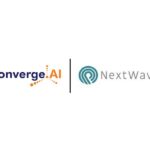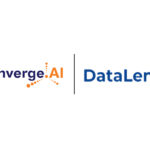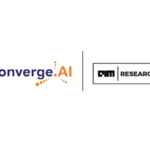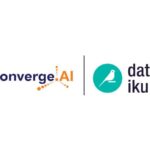
Is Your Tech Stack a Frankenstein Monster? (Read This Before You Plan Your Next Tool)
Lessons from a Senior Practitioner
‘If you have to do it for a purpose, do it the right way.’
I have consulted and worked with many Fortune 500 clients, helping them turn data into decisions. Along the way I have seen something surprising, even the biggest, savviest teams sometimes grab a tool because it’s in talks, then bend it into something it was never meant to do. They make it work just bare, but they pay for it later in time, money, and frustration.
Here are a few real-world examples I’ve seen
Go Anywhere: File Transfer Tool Turned ETL Nightmare
Go Anywhere is built for secure, managed file transfers, ideal for moving data across systems with strong governance, logging, and compliance. But one enterprise team mistook it for an ETL tool. They wired together nightly jobs to clean, transform, and load large datasets, stretching Go Anywhere beyond its core strengths. Performance tanked. Transfers failed midway. Debugging became a daily task. Instead of automating workflows, the team ended up managing chaos with patches and manual restarts.
After months of frustration, they moved to a lightweight ETL platform. What took hours now ran in minutes, no failures, no stress. Go Anywhere went back to doing what it does best: moving files securely, not manipulating data.
Databricks: Heavy Machinery for a Light Job
Databricks is built to handle very large data sets, real-time event streams, and machine learning in one place. It can process millions of records per second and run notebooks where teams work together(I am a big fan of databricks) A manufacturing firm, however, used it only to copy CSV files between two databases every night. They turned on big clusters, ran simple copy jobs, and got a cloud bill five times higher than a basic ETL service. Engineers spent days setting up and tuning the system instead of cleaning data or building insights. After the cost and headaches piled up, they switched to a simple ETL tool and cut their bill and work in half.
Palantir: Slate for Slides, Not Dashboards
Palantir Slate is a powerful framework designed to build interactive web apps with customized user flows and dynamic components. But one large enterprise tried using Slate purely for reporting and dashboards.
Instead of building tools optimized for visualization, they recreated graphs and tables in Slate using complex web components and manual formatting. Performance dropped, changes required developer cycles, and users had to learn a UI that wasn’t meant for quick data exploration. Eventually, they migrated dashboards to a BI tool and kept Slate focused on operational apps where it truly excels.
In my experience, it all comes down to a few common pressures:
Hype and FOMO
Over-engineering
Lack of Clear Requirements
Skill Gaps and Familiarity
Five Things to Do Before You Pick Your Next Tool
1. Start with the Problem, Not the Tool
Before suggesting tools, make sure everyone is aligned to the actual business needs. Write down what the team is trying to achieve for example, “Send inventory updates every 30 minutes to 50 warehouse managers,” or “Give sales teams self-serve access to regional performance data.” Be clear on data size, speed, end users, and security needs. This helps ensure decisions are based on shared goals, not personal preferences or tool bias.
2. Match the Tool to the Job
Once needs are defined, shortlist tools that are built to solve that kind of problem. If the requirement is real-time data, consider event streaming tools like Kafka or Flink. If it’s ad-hoc reporting, maybe a conversational AI interface makes more sense than a dashboard. Avoid choosing a tool just because it’s already in use elsewhere in the org; what works for one function may not work for another. Evaluating tools through the lens of “fit-for-purpose” keeps everyone focused on outcomes, not popularity.
3. Align on Skills and Learning Effort
As part of the decision process, consider what skills already exist across the teams that will use or support the tool. If the tool requires Python or DevOps knowledge but most users are familiar with SQL and Tableau, plan for training or onboarding support. Be honest about how much time and budget is available to upskill. This avoids friction after rollout and sets realistic expectations around adoption and usage.
4. Think Beyond Today, Plan for Scale and Integration
Make sure the selected tool will hold up as the business grows. Will it still work if data volumes double next year? Can it connect to your data lake, security systems, or AI models later? Will it create silos or help break them? Discuss how each tool fits into the broader tech stack and long-term roadmap. It’s easier to adopt the right tool now than to replace it later when it no longer scales or fits.
5. Beware the Shiny, Hidden-Cost Tools
Just because a platform launches a new “AI-powered” capability doesn’t mean it’s ready for real-world use. Often, these features look promising on the surface but come with hidden prerequisites. For example, one such AI tool was marketed as a game-changer for reporting, but in practice, it only worked well if the data model was perfectly optimized. With typical, imperfect data, it failed to deliver value. Before recommending or trying out such tools, always ask: What are the conditions for this to actually work? Will it handle our current data quality and structure? Are the impressive results only achievable in ideal demo setups. Look past the hype. Trendy doesn’t always mean trustworthy.
This approach helps teams make better tooling choices by focusing on what matters, aligning with user needs, and thinking ahead. It also keeps technical, business, and operations voices equally heard in the process.
In the end, the “right” tool isn’t the flashiest, the newest, or even the one you’ve just invested in. It’s the one that fits your problem, your team, and your roadmap.
Take the time up front to get clear on your needs, and you’ll save yourself weeks of workarounds. Need a consultation- Click here












